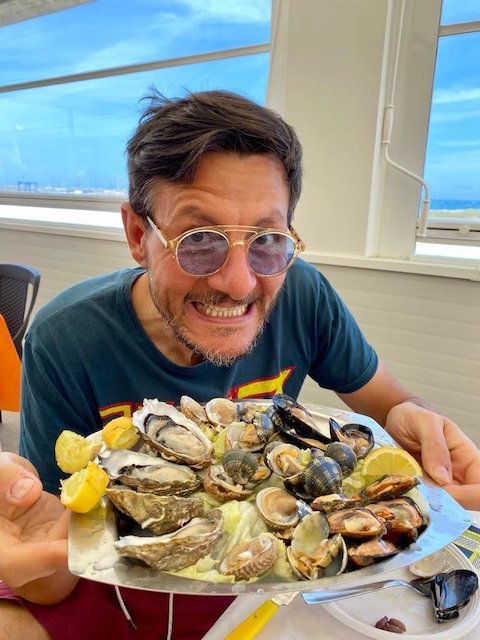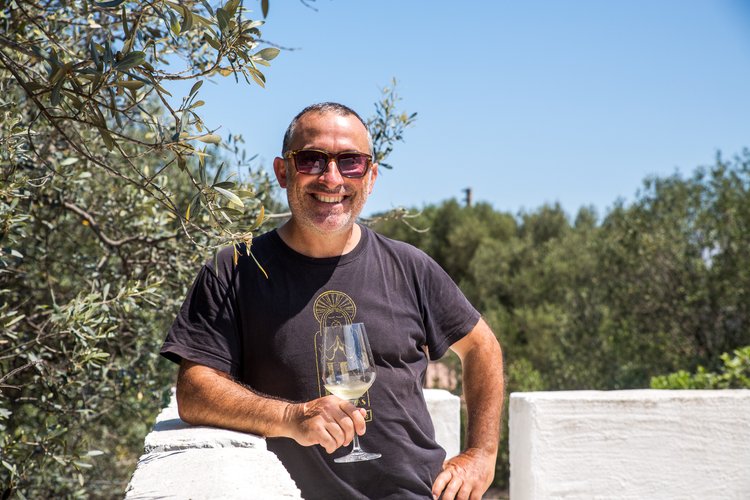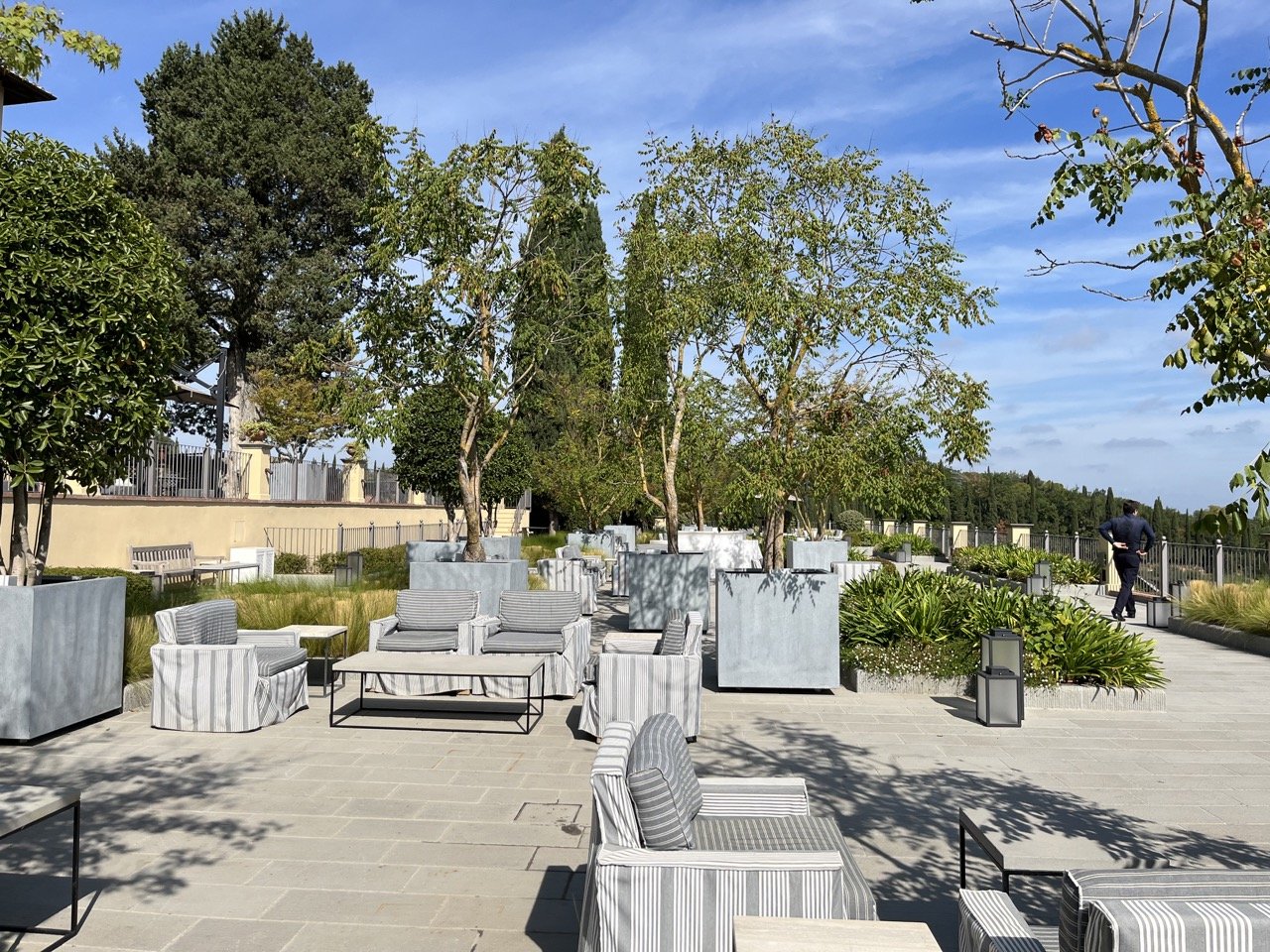A Local’s Guide to Travel in Tuscany
Affiliate disclosure: some of the links in this article are affiliate links. If you book using one of them, we’ll earn a small commission. All of our info is free to read and free of ads, so we appreciate it!
Tuscany, the most famed region in Italy and a place visited by millions of people every year, really needs no introduction. Featured in countless films and often used as the postcard image of quintessential Italy, Tuscany is squarely on the tourist map for just about everyone.
And that’s for good reason; because this is a truly spectacular region!
Tuscany has just about everything that you could ask for from a vacation destination: majestic UNESCO world heritage cities and towns, a to-die-for countryside, lovely mountains and fabulous beaches, and globally-renowned culinary and enological traditions. Simply put, we’ve got it all here!
And when it comes to culture, Tuscany is a fabulous part of Italy to discover. Tuscan, the region’s dialect, is very similar to Latin, and today’s standard Italian language was born from it. This is largely thanks to the writings of local artists like Dante Alighieri, Francesco Petrarca, and Niccolò Machiavelli.
On top of that, this was also the cradle of the Italian Renaissance, with Florence having been the epicenter. If you’re interested in art and history, few places in Italy can beat Tuscany.
So, if you’re looking to sample great food and wine, enjoy beautiful scenery, walk through history in medieval towns, and maybe even hit the beach for a bit, Tuscany has got you covered. No matter your tastes, travel style, or interests, Tuscany has something to offer.
Table of Contents
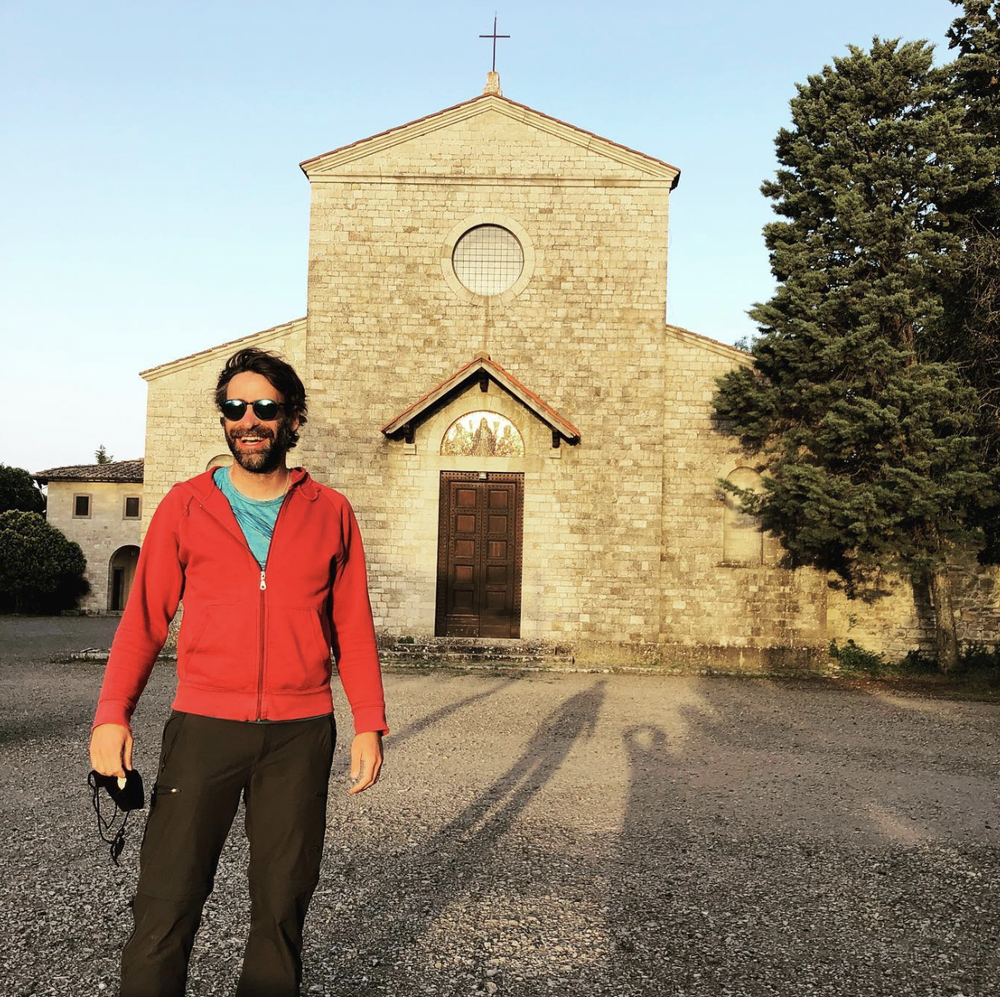

Where is Tuscany
Tuscany is located in central Italy, about a 2-hour drive north of Rome at its southernmost point, and an hour south of Bologna in the region’s north. It is bordered to the northwest by Liguria, to the north by Emilia-Romagna, to the east by Marche and Umbria, and to the south by Lazio (where Rome is).
The western edge of Tuscany, runs all along the coast, from the Tyrrhenian Sea in the south to the Ligurian Sea in the north. Along much of the region’s northern border, you will find the Tuscan-Emilian Apennine Mountains, along with the Apuan Alps in the northeast.
Tuscany is a fairly big region for Italy (about 8,900 square miles), which means that there is a lot to see and do, and there is much more to it than just its (beautiful) countryside and the (magnificent) city of Florence.
Scattered all throughout Tuscany you will find fortified hilltop towns, mid-sized cities, beaches and coves, mountains, parks, and hot springs. Ready to start discovering it? Then keep reading!
How to get here
By plane
Tuscany has two cities with international airports: Florence and Pisa.
Florence’s airport is called “Amerigo Vespucci Airport” (FLR), and it’s located about 10 kilometers northwest of the city. The airport is small but has flight connections with lots of other Italian cities and some European capitals. If you are traveling from the US or elsewhere in the world, you will need to fly into Rome or Milan before Florence.
From the airport, you can take a tram into the city or directly to Santa Maria Novella train station which has trains to all different parts of Tuscany and Italy.
Pisa International Airport’s (PSA) official name is Galileo Galilei Airport, and its distance is only 6 kilometers from the town center. This is actually the larger of the two airports, and more airlines serve Pisa than Florence.
From the Pisa airport, you can easily arrive into the city center with the Pisa Mover, a high-speed monorail train that gets you into the city in just 5 minutes. Then, from the Pisa train station, you can catch trains to many other destinations in Tuscany, including Florence.
By train
Tuscany’s major towns are very well-connected by train to Italy’s major cities. Most high-speed trains go direct to Florence, but some other Tuscan cities are also reachable.
Florence has high-speed rail connections with Milan, Rome, and Venice (home to Italy’s 3 major international airports) as well as Bologna, Naples, and many other cities. You can also travel to and throughout the region by Intercity and Regional trains, which are slower but cheaper.
To see train schedules and options, check on Trenitalia and Italo.
By ferry
For those of you who are coming from Sardinia, Sicily, or Corsica, you can also arrive to Tuscany by ferry via the city of Livorno, the largest port in the region. From Livorno, it’s an easy train ride to other destinations in Tuscany.
By car
If you're headed to Tuscany from within Italy and already have a car, driving into the region is super simple. Italy's main highway, the A1 Autostrada del Sole, runs straight through the eastern part of the region, passing close by to many of the main cities and towns.
From Rome the drive to Florence takes a little over 3 hours, almost all of it on the highway. Parts of southern Tuscany (like Montepulciano and the Val d’Orcia) are significantly closer to Rome, taking just 1.5 hours to reach.
From Milan, it's a 3.5 hour drive to Florence and about 1.5 hours more to get to the more southern parts of the region.
How many days to spend
There is much more to see in Tuscany than just Florence, San Gimignano, and the Val d’Orcia. This is a large region with lots of historic towns and cities, beautiful countryside, and even some very good beaches. Seeing it takes time.
To appreciate Tuscany properly and really get a feel for the region, you’ll need at least 5 days, with 7 being ideal.
For the most part, it’s quite easy to get from one place to another since the distances are pretty manageable by train or car, and there are good public transit connections for major destinations. Thankfully, you will never have to sacrifice entire days to travel, and will instead be on the road for at most a few hours before reaching your intended destination.
3 days - Florence and a day trip
If you only have 3 days, don’t overcomplicate things. You’ll want to spend 2 of them in Florence and then can consider a day trip to somewhere nearby.
For day trips, you could visit Lucca, San Gimignano and Volterra together, or see Siena and a bit of the Chianti countryside. Those are your best options.
The Val d’Orcia and places like Pienza and Montepulciano are too far away, so don’t even bother considering them.
5 days - A decent introduction
5 days is the minimum amount of time needed to see a bit of what Tuscany has to offer. Remember, this is a region filled with beautiful hilltop towns, renaissance cities, pretty coastline, rugged mountains, and world-renowned wine country, so there’s a lot to see.
With 5 days, you could spend 3 days in Florence, with one of them dedicated to day tripping out to Pisa or San Gimignano and Volterra, combine the Chianti countryside with a visit to Siena, and then spend your final day hopping between towns in the Val d’Orcia or visiting Cortona.
There are, of course, lots of other possibilities.
7 days - Enough time for a solid itinerary
A 7-day trip to Tuscany gives you enough time to check off many of the highlights, while also spending some time enjoying the region’s gorgeous countryside. It’s not enough days to see the entire region, but it will let you beyond just the surface.
With 7 days, you could spend a pair in Florence, visit Pisa or Lucca, go wine tasting in Chianti, enjoy Siena, hop around the hilltop towns of the Val d’Orcia, and then finish up in Cortona or along the Maremma coast.
With 7 days, you can start to get creative and see some lesser-explored parts of the region.
For a detailed one week plan, check out our 7-day Tuscany itinerary.
10 days - A comprehensive visit
With 10 days in Tuscany, you can fully experience the region and see it in all its glory.
With a week and a half, you can do everything mentioned above, but in much more leisure. You’ll be able to visit loads of pretty medieval towns towns, dedicate more time to Florence, see the region’s lesser-visited cities, and enjoy drives, walks, and bike rides in the countryside.
You’ll likely even have time to spend a coupe of days beach hopping along the Tuscan coast, visiting seaside cities like Livorno, and the gorgeous Argentario peninsula.
To really mix things up, you could shorten your time visiting the hilltop towns or cities of the region, and add on visits to the islands of Elba or Giglio.
There are countless ways to spend a week and a half in Tuscany, and the beauty of this is that you will never run short of things to do and places to visit. Your only challenge will be deciding where you want to spend most of your time!
Things to do
Tuscany is best known for Florence, wineries, and a clutch of lovely Renaissance cities and medieval hilltop towns where famous artists and scientists lived, from Leonardo Da Vinci to Michelangelo. Its countryside, home to the wineries of Chianti and the rolling grain fields of the Val d’Orcia, is also among Italy’s most iconic landscapes.
Here, architectural wonders and artistic masterpieces mingle with beautiful landscapes made up of green hills, cypress trees, vineyards, and olive groves.
An agricultural powerhouse, Tuscany produces excellent-quality olive oil and wines, both which are key-ingredients of the many delicious local dishes made here. As such, food and wine tasting are very popular here.
For scenic drives, rolling hills, and bucolic countryside, the Chianti region and the Val D’Orcia (a UNESCO heritage site) are simply unbeatable.
Heading toward the coast, idyllic beaches with crystal-clear waters backed by coastal plains, such as in the Maremma region, are perfect for snorkeling, boat tours, and other water sports.
And last but not least, Tuscany has two incredible islands that should be on everyone’s bucket list: Elba and Giglio.
For some more ideas, here’s a quick list of some interesting things to see and do when visiting the region:
Visit charming hilltop towns like Cortona, San Gimignano, Montepulciano, and San Quirico d’Orcia
Hit the beach - the entire Maremma coast is lovely, with the Monte Argentario area especially beautiful
Go for wine or olive oil tastings in the Chianti region
Hike in the Apennines or Monte Capanne
Explore the heart of the renaissance: Florence, Pisa, and Siena are the best places to do it
Go truffle hunting in San Miniato
Soak in hot springs in Bagno Vignoni, Monte Amiata, Saturnia, Parco dei Mulini, or countless other great spots
Rent a bike and enjoy quiet roads and stunning views in Chianti or the Val d’Orcia
Admire Michelangelo’s David at the Accademia Museum in Florence
Hike a section (even if just for a morning) of the Via Francigena pilgramage route
Tour Fortezza delle Verrucole (a scenic castle in Garfagnana)
Do a wine tasting in a castle - Castello di Verrazzano and Castello di Brolio are too obvious candidates
Try the local pecorino cheese in Pienza
Walk along Lucca’s imposing city walls
Relax in nature in Parco Naturale della Maremma
Wander through the stone villages and hamlets of the Chianti Classico
Go on a food tour in Florence
Take a pasta cooking class. Everyone does it for a reason - it’s good fun!
Ride a Vespa through the countryside - Toursity? Yes. A blast? You bet.
Learn about marble in Carrara
Go bird-watching at the Laguna di Orbetello


Places to visit
When considering where to visit in Tuscany, it's helpful to first understand the region's general geography.
Because Tuscany is big, and because its terrain varies quite a lot, it's important to have a sense for where things are before you start thinking about where you'll want to visit. If you're coming for 3-7 days, you can't see everywhere, so you'll need to focus on a few main areas and stick to them.
The far east of the region is hilly and crossed by Italy's main highway, the A-1 Autostrada del Sole that runs from Naples in the south to Milan in the north. Coming from Rome, the towns of Cortona, Montepulciano, Arezzo, and Florence all lie just off the highway.
In the center of the region, you have the Val d’Orcia countryside which gradually gives way to the Crete Senesi badlands and eventually the city of Siena. To Siena's northeast is Florence, with the Chianti region in between the two cities.
In western Tuscany the mountains and hills level off into flatter ground, containing the cities of Lucca, Pisa, and Livorno. As you move from Lucca north, mountains suddenly rise up again, and then you hit the border with the Liguria region, home to the famous Cinque Terre.
Ok, so that's my geography lesson. Now, here are the main places I think you should consider when visiting.
For even more ideas, have a look at my guide to 20 beautiful places in Tuscany.
Florence
Florence is Tuscany's capital and an absolute Renaissance masterpiece filled with gorgeous architecture, fabulous museums, and beautiful churches.
Yes, it's overcrowded, overpriced, and overwhelming, but it's also wonderful and if you want to admire art (both in the museums and in the streets), there are few better places in Italy.
Its location and good transport connections also make it a convenient base for day trips to places like Siena, Chianti, Lucca, Pisa, and San Gimignano.
For more info, see my guide to Florence.
Chianti
Chianti is the pretty wine-growing region that covers a bucolic patch of land between Florence and Siena. Aside from lovely vineyards carpeting the hilly terrain, its many small medieval towns are very pleasant to visit.
If you want to do things like taste wine with stunning views, stay in a castle, and meander on quiet country roads and through fields of grapes, this is the place to be.
Read my guide to Chianti to learn more.
Siena
Siena is one of Italy's prettiest small cities and wandering around its medieval streets is a must on any visit. The town's cathedral is one of the most beautiful in all of Italy as is its main square, Piazza del Campo.
You can easily visit Siena in a day (or even half a day), but I always think it's worth spending at least one night here.
I wrote a guide to Siena if you want to read more.
Val d’Orcia
The Val d’Orcia is an agricultural valley that is about 45 minutes to the south of Siena. Its known for its golden fields of grains and wheat and pretty hilltop towns that look out over them.
The most famous towns are Montalcino (where Brunello di Montalcino wine is made), Pienza, San Quirico d’Orcia, Montichiello, Montepulciano, and Radicofani.
Montepulciano is not technically part of the Val d'Orcia, but it lies right on its eastern edge, so I usually include it too.
The tiny hamlet of Bagno Vignoni, high on a hill, is famous for its thermal baths which have been in use since the time of the Romans.
Check out my Val d’Orcia travel guide for more advice on visiting.
Lucca
Lucca is a lovely walled city in western Tuscany that is surrounded by pretty countryside. It's a good base for day trips to Pisa, the Alpi Apuane mountains, and the Cinque Terre.
While it gets plenty of visitors, most people come on day trips, so it can be a very nice city in which to base yourself for a few days as it's mostly a local place in the early mornings and evenings.
Here's my guide to Lucca.
Pisa
Pisa really needs no introduction. Home to the world-famous Leaning Tower of Pisa, millions come ever year to see the iconic tower and 3 other unique buildings that form the Piazza dei Miracoli.
Most people visit just to see the tower and leave, but the city itself is actually quite pleasant and worth sticking around in for longer.
Indeed, I have guide to Pisa as well.
Cortona
Cortona, in Tuscany's south near the border with Umbria and Lazio, is a pretty hilltop city of Etruscan origin. It has no major sights aside from its wonderful central square, but is simply an exceedingly pleasant place.
It overlooks the shimmering Lake Trasimeno and is a favorite among artists and artisans, with lots of workshops and galleries.
Because it's on the border with Umbria, it's an easy place from which to take day trips to cities like Perugia and Assisi.
Learn more in my guide to Cortona.
San Gimignano
San Gimigiano, with its dense concentration of medieval towers, is a perennial favorite, particularly among Americans. About 1-hour from Florence, it's usually visited as a day trip, typically combined with Siena.
I think San Gimignano is very pretty (and its many towers truly are a unique sight), but if there's anywhere in Tuscany that earns the designation of "tourist trap”, this is it.
I've included it in this list because it's a name everyone has heard of, but if you only have a few days in the region, I'd actually recommend that you skip it. There are better places to spend your limited time.
Livorno
Livorno is a major port for ferries and cruise ships on Tuscany's western coast. It receives relatively few visitors as most people arrive and depart straight away for other parts of the region, which is a real shame because it's a lovely city with great seafood restaurants.
I find visiting Livorno quite charming precisely because so few people do! It's also Tuscany's only major city on the sea, so the atmosphere is distinct from anywhere else you'll visit.
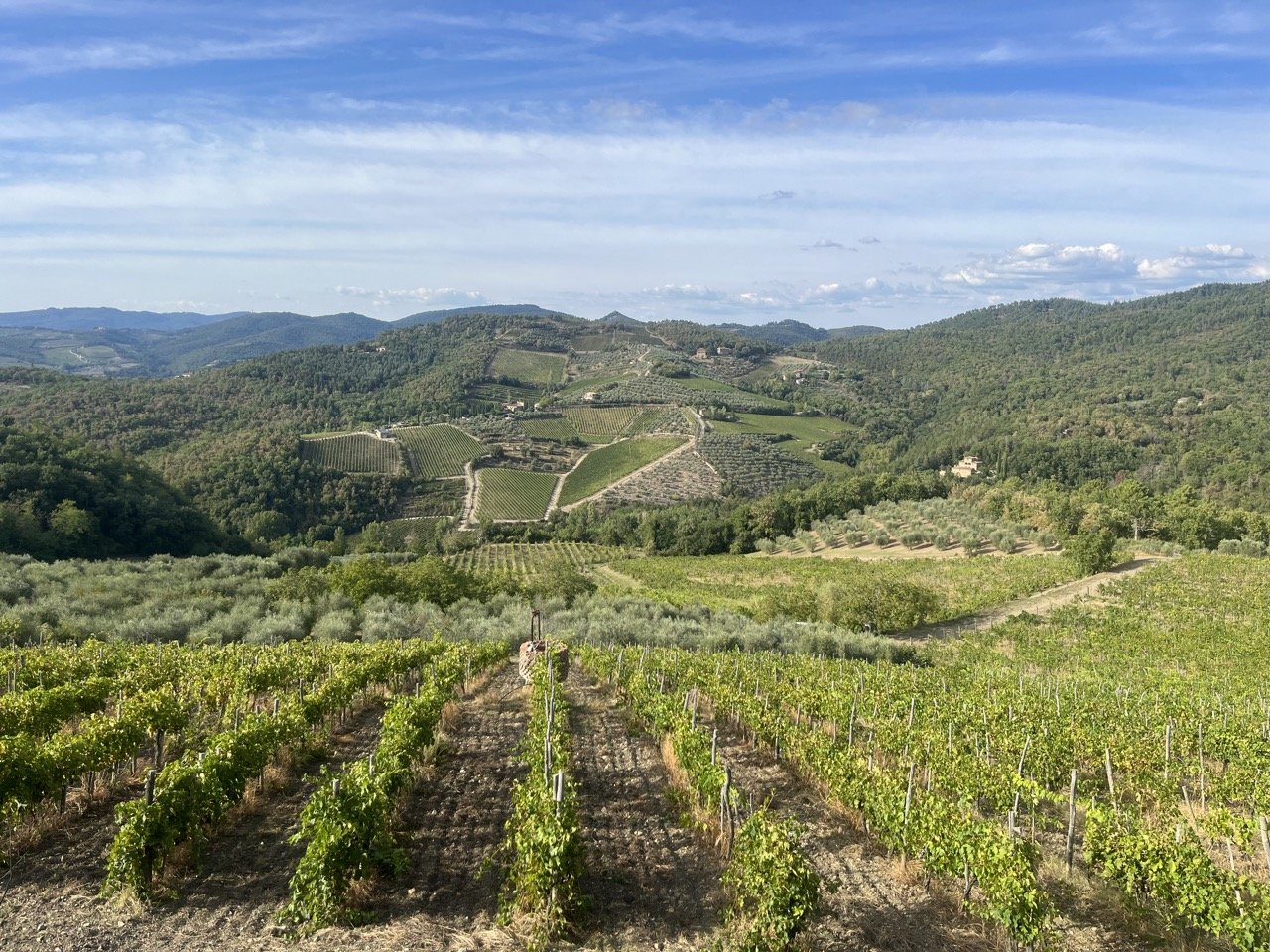
How to get around
Public transport
Tuscany is overall well-connected by public transit and you can get between most larger cities using the train. For a few popular destinations, like San Gimignano, Siena, and Montepulciano, train service is poor or nonexistent, so you’ll need to look at buses. Both trains and buses run frequently and are inexpensive.
Regional and local trains are operated by the national rail service, Trenitalia. For buses, the main companies in Tuscany are Autolinee Toscane, Sitabus, and Tiemme. You also have Flixbus. To make checking routes easiest, you can try using an aggregator website like BusBud.
For journeys beyond the main towns and cities and especially into the countryside, you will absolutely need to have a car. Public transportation does not cover rural areas and it’s very slow and indirect for many of the smaller hilltop towns, so it’s not a realistic option for most travelers.
Renting a car & driving
Renting a car in Tuscany is extremely straightforward. You’ll find rental car offices in major cities like Florence, Siena, and Pisa, as well as at the airports. All of the major international rental car companies can be found here, along with a few local options, and you can pre-book your car online and pick it up when you arrive.
The price per-day for renting a manual-transmission compact car is usually around €30, but can be much cheaper in the off season, or much much more expensive in high season. Cars with automatic transmissions always cost more.
Driving in Tuscany is easy as the roads here are in excellent condition. Major state and provincial roads are well maintained and clearly signposted, and highways are easy to navigate. Outside of the cities, traffic is light and most drivers are quite relaxed.
The only difficulties you’re likely to encounter are when driving within cities and towns (ZTL traffic-limited zones can be confusing) or in very rural areas, especially during the harvest season when big trucks and farm equipment make already narrow narrow roads feel even smaller.
Where to book a car rental
To check prices and book, I recommend using DiscoverCars. It’s a car rental website taht includes offerings from all the major international rental companies as well as lots of smaller local agencies, which often have much better pricing. You can often find great deals.
I use it myself and have always had good experiences.
Where to base yourself
If you’re planning to stay in Tuscany for anything more than 3 days, you should split your time between a few different bases, so that you can see different areas of the region and minimize time spent driving or taking the train out to places of interest.
For stays of 3 days or less, and especially if this is your first time in Tuscany, I always recommend basing yourself in Florence for the entire time and, if visiting other places, taking day trips.
I've given some quick recommendations below, but for a more comprehensive overview, have a look at our guide on where to stay in Tuscany.
Florence
Florence, the birthplace of the renaissance, is a gorgeous city and a must-visit for anyone traveling to Tuscany. It’s iconic and impressive, and the city is filled with more world-class museums, galleries, churches, gardens, and gorgeous buildings than you could possibly visit in a single trip.
Is it touristy? Yes. Is it still worth visiting? Absolutely yes!
As long as you know what to expect and have a good plan for your visit, you will have a great time in Florence. Millions of people come here for a reason!
Florence is also an ideal base because being Tuscany’s biggest city, it’s a transportation hub. It also offers a huge selection of hotels, restaurants, cultural offerings, tours/experiences, and everything else you’ll need during your trip.
From Florence you can easily day trip to places like Siena, Lucca, Pisa, San Gimignano, Cortona, and more, all with public transport.
Siena
Medieval Siena is a great base for those who want to be in a city, but not a big one. With a population of about 50,000 people, it’s lively and has everything you need for a stay of a few days or more, but it never feels overwhelming.
It’s also conveniently located to make day trips to Florence, Chianti, and the Val d’Orcia, all of which are 30-60 minutes away by car.
A bustling university town, it’s got plenty of great restaurants and bars where you can enjoy a fun night out.
You won’t find quite as many hotel options as in Florence, but there should still be plenty of places to choose from at all price levels.
One important thing to know is that Siena (and the towns and countryside outside of it) is rather poorly served by public transportation, so you will absolutely need to have a car if using it as your base.
Monteriggioni & around
Now, if you’re interested in staying in the countryside amongst the smalls towns of rural Tuscany, the province of Siena is your best option. This area is gorgeous, it’s got tons of wineries, and is bursting with “agriturismi” (pretty farmhouses that have been converted into hotels, many with pools and excellent on-site restaurants), which are wonderful accommodation options.
The town of Monteriggioni is one excellent countryside base. Here, you can visit the local castle, admire stunning views, do all sorts of outdoor activities (from horseback riding to e-biking), and quickly travel to Siena and other points of interest.
Another option is to stay in or surrounding the small towns of the Chianti countryside (also part of the greater province). Little villages like Radda and Castellina are exceedingly charming and idyllic, and they’re good bases for anyone looking for a quiet and relaxed pace of life.
Montepulciano
If you want to spend a couple of days visiting the Val d’Orcia, I generally think that staying in Montepulciano is your best option.
It’s the largest town in the region (14,000 people) and has the best selection of hotels, restaurants, cafes, bars, etc.
That said, the pleasure of visiting the Val d’Orcia is to enjoy the stunning countryside, so my actual recommendation would be to stay at a rural property somewhere outside of town, perhaps nearer to Pienza or Montichiello.
Montepulciano is also within easy reach of Arezzo and Cortona, so both cities can be visited as day trips.
The Maremma Coast
The Maremma coast is Tuscany’s southern coastline (beginning a bit south of the city of Livorno) which is home to the region’s best beaches. The most popular beach area is Monte Argentario, a peninsula jutting into the sea whose beaches look more like what you’d find in Sardinia than Tuscany.
Porto Santo Stefano is a particularly beautiful town with a bubbly atmosphere in a Mediterranean setting. It doesn’t offer any real cultural attractions, but it’s near to stunning beaches and coves. The surrounding area is especially verdant, so it’s also a great place to enjoy scenic walks in nature.
Other towns in the region to consider as a base are Grosseto, Orbetello, and Follonica.
Since the main attractions in this area are the beautiful beaches, many of which are not served by public transportation, you will need to have your own car in order to really experience what makes it so special.
Best time to visit
The best time to visit Tuscany is indisputably late spring or early fall, especially the months of May and September. These are the periods when traveling in Italy is most enjoyable, and Tuscany is no exception.
Visiting in late spring and early fall
In late spring, the temperatures are already warm but not excessively hot, so it’s perfect for visiting historic towns, the countryside, and also the coast.
Besides Florence, which is crowded all year round, late spring isn’t packed with tourists, so you will surely enjoy your time there. Italians are still at work/school, so prices for accommodation and other attractions haven’t yet skyrocketed. Plus, most restaurants on the coast and less touristy areas/towns will already be open since they usually open up right after Easter (which is in late March or until mid-April).
Similarly, September also has great weather, lower prices, and less crowds. On top of that, seasonal venues (beach clubs, for instance) are still open and going full swing, before things die down toward the end of the season and everyone closes up shop for the winter.
If you can swing it, there’s no question that late spring or early fall are the perfect times to travel in Tuscany.
Visiting in summer
In summer, the weather is roasting hot in the cities and towns, while the coast overflows with vacationing Italians and foreign tourists. This is especially true from mid-July to the end of August.
Prices are incredibly high and availability is limited pretty much everywhere, so you need to reserve way in advance for hotels, rental cars, restaurants, and even entrance tickets to popular museums and historical sites.
Now, if summer is the only time you can come to Tuscany, don’t despair! While it’s not the ideal time to visit, it’s not as if every town, beach, or vineyard is going to be permanently packed.
You can always find hidden places that the masses have yet to discover, and if you visit popular locations early in the day or later in the evening (before the day trippers have arrived or after they’ve left), you can still enjoy beautiful places in Tuscany without being constantly shoulder to shoulder with others.
If visiting in summer, you just need to plan ahead, make reservations in advance, and visit the right places at the right time.
Visiting in winter
Visiting Tuscany in winter isn’t an outright bad idea either. While entrance tickets for museums and monuments are the same all year long, hotels and car rentals are much more affordable than at other times of year. If you’re looking to save money, this is the ideal time to travel in Tuscany.
November, January, and February are the least busy times to visit the region, which all makes it the ideal time to travel through the beautiful hilltop and art towns, which are packed throughout much of the rest of the year.
However, just be aware that it’s pretty chilly at this time of year, the weather is unpredictable and can often be grey and rainy, and trips out to the countryside or coast aren’t especially pleasant.
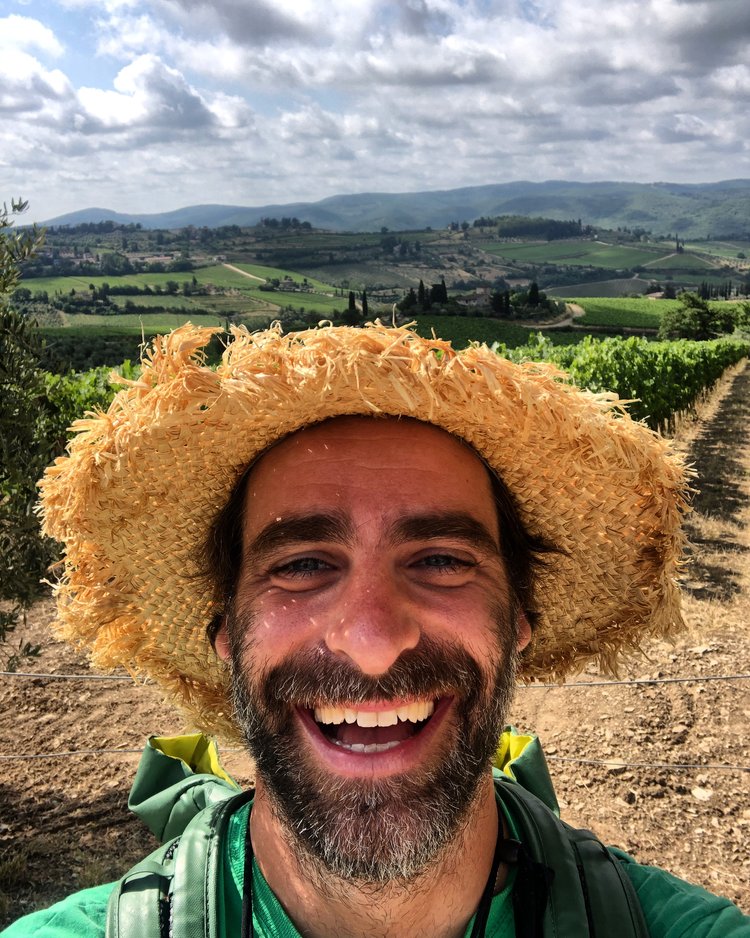

Cost of travel in Tuscany
Compared to other regions in Italy, Tuscany is rather pricey. This shouldn’t be a much of a surprise though, as this is a premier tourist destination that welcomes millions of visitors every year.
Here are some rough prices for typical expenses:
A night at a hotel: 80€ to 150€
An average meal: 15€ for daily lunch specials (typically a main dish, a drink, and coffee or dessert), and 20 to 50 euros for dinner, depending on how fancy the place is and whether you want wine and multiple courses.
A glass of wine: 3€ to 9€
A coffee: 1-2 euros for an espresso or cappuccino at a non-touristy bar/cafe
Renting a car: 30€ per day (potentially much more in the high-season, or if you need an automatic)
A taxi ride within a city/town: 10€ to 25€
Short-distance bus/train ticket: 3€ to 10€
Long distance bus/train ticket (but still within the region): 10€ to 25€
Entrance tickets: 0€ to 25€
There is a wide range of costs here. Local museums or lesser monuments and attractions will usually not cost more than 10 euros, while visiting places like the Accademia Gallery, Uffizi, Siena Duomo Complex, and other premier destinations can cost around 20 euros.
Wine tastings at a winery: 10-20 euros (this usually includes multiple tastings and some light snacks)
Bike/E-bike rental in the countryside: 50 to 100 euros for the day
Guided tours (private and group):
Half-day private guided tour: approximately 250 euros
Full-day private tour: 400-600 euros.
Small group tours: 40-80 euros per person.
Tuscany itineraries - from 5 days to 2 weeks
5-day itinerary - Art towns
Days 1-2: Florence
Day 3: Pisa and Lucca (day trip from Florence)
Day 4: Siena
Day 5: San Gimignano, Monteriggioni, Colle di Val d’Elsa (day trip from Siena)
7-day itinerary - Art towns and the Chianti area
Days 1-2: Florence
Day 3: Pisa and Lucca (day trip from Florence)
Day 4: Siena
Day 5: San Gimignano, Monteriggioni, Colle di Val d’Elsa (day trip from Siena)
Day 6: Chianti region
Day 7: Arezzo and/or Cortona
10-day itinerary - Art towns, the countryside (Chianti and Val d’Orcia), and the coast (Argentario and Giglio Island)
Days 1-2: Florence
Day 3: Pisa and Lucca (day trip from Florence)
Day 4: Siena
Day 5: Chianti region
Day 6: Val d’Orcia with Montepulciano
Day 7: Arezzo and/or Cortona
Day 8: Terme di Saturnia
Day 9: Argentario (Porto Santo Stefano and Porto Ercole)
Day 10: Giglio Island
2-week itinerary - The best of Tuscany (art towns, islands, Argentario, hot springs, and the countryside)
Days 1-2: Florence
Day 3: Pisa and Lucca (day trip from Florence)
Day 4: San Miniato
Day 5: Elba Island (ferry from Livorno)
Days 5-6: Porto Santo Stefano & Porto Ercole
Day 7: Giglio Island
Day 8: Bagni San Filippo
Days 9-10: Val d’Orcia with Montepulciano
Day 11: Cortona or Arezzo
Day 12: Siena
Days 13-14: Chianti region


Guided Tours in Tuscany
If you’re looking to hire a guide for tours or experiences while in Tuscany, you have loads of great options: hilltop town tours, day trips into the countryside, wine tours, gastronomic experiences, truffle hunting, hikes, city walking tours, and on and on.
City tours of Florence
If you’re looking for city tours in Florence, I always recommend reaching out to Francesca Zambini and Samuele Socci. They're both Tuscan natives who have been guiding for many years.
Day trips, wine tours, and outdoors adventures in Florence and Chianti
For everything from hiking to cycling, Cinque Terre day trips, and wine tours in Chianti, Florence-based guide Stefano Mazzantini is an outdoors enthusiast and sommelier. He's also a lot of fun!
Tours of Montepulciano, Siena, and the Val d’Orcia
For tours of Siena and the towns, countryside, and vineyards of the Val d’Orcia, you can't do any better than Serena Baglioni. She’s a local guide based in Montepulciano who organizes unique experiences in her gorgeous region.
More Tuscany travel info
For more advice on planning your trip to Tuscany and Italy, have a look at some of our other guides and itineraries!
Florence
Tuscany
Italy
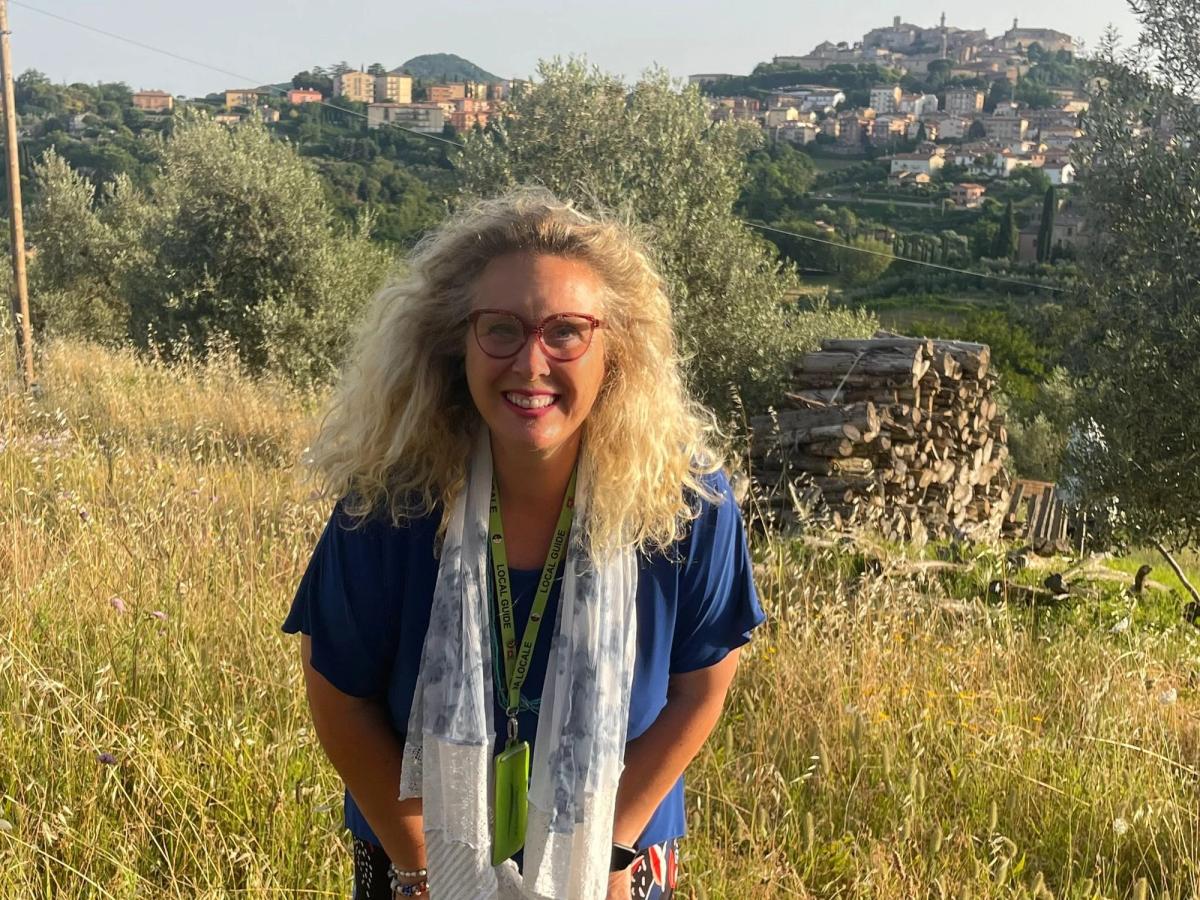
Serena Baglioni
Tuscany Expert based in Montepulciano
Ciao ragazzi! 👋
Hi, I'm Serena, and I've been a tour guide and travel consultant here in Tuscany for the last 25 years. If you're looking for some local advice on your trip, I'd love to help!
Learn more Book a consultation















